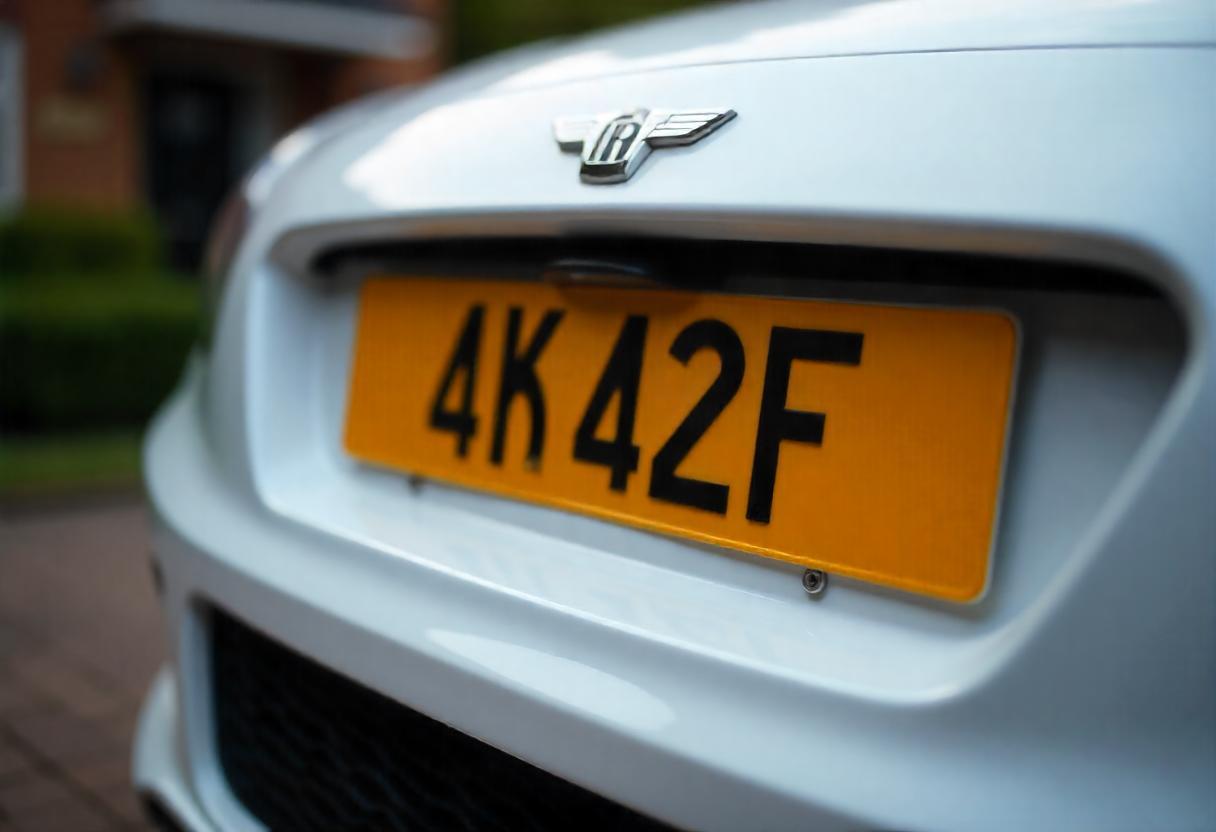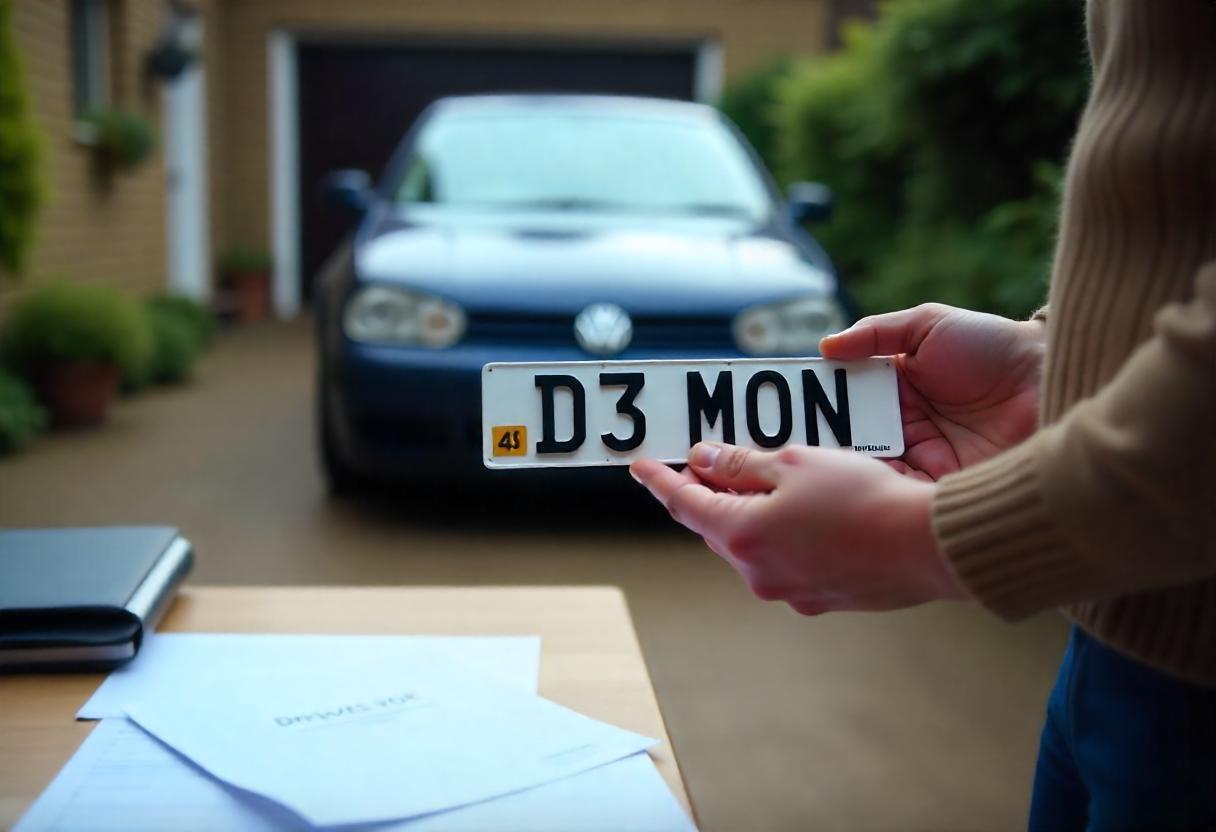There’s something about a number plate that sticks — literally and emotionally. Whether it’s followed you through a few upgrades or it’s your pride-and-joy personalised reg, knowing if and how you can reuse it is a common question. So, if you’re thinking of swapping cars, managing a growing fleet, or just want to keep hold of a plate you’re not quite ready to part with, this guide should clear things up.
Let’s break down when reusing a permanent number plate makes sense, what you’ll need to check, and how to do it properly without getting tripped up by DVLA red tape.
1. What Is a Permanent Number Plate?

A permanent number plate is more or less the standard issue registration that comes with your vehicle — the one you get when a car is first registered with the DVLA. It’s tied to the vehicle, not the owner, and tends to stay with it unless you ask for something different.
It’s different from personalised plates (which you pick yourself) and temporary registrations (used when a car is imported or in transit). Most permanent plates are made up of two letters, two numbers, and another three letters — you’ve probably seen thousands like them.
They’re not flashy, but they’re yours — and they can be transferred or retained, as long as you follow the proper steps.
2. When Can You Reuse a Number Plate?

It’s not quite a free-for-all. There are a few situations where you might be allowed to reuse a plate — but it does need to meet some conditions.
- If you’re selling or scrapping the vehicle and want to keep the reg
- If you’ve taken a vehicle off the road temporarily (using SORN)
- If you’re moving the plate to another car you own
- If you’re managing a fleet and want consistency across similar vehicles
The DVLA needs to be involved in every case. You can’t just unscrew the plate and slap it on the next car — even if it’s yours. There’s paperwork, timelines, and some small fees involved, but it’s all doable.
3. Eligibility Criteria for Retention
Before you even fill in a form, you’ll want to check the basics:
- The plate must be registered with the DVLA (UK-issued only)
- The vehicle has to exist — sounds obvious, but it must be real and still in the DVLA system
- It should have a valid MOT (if it’s over three years old)
- The car or bike must be taxed, or have a valid SORN
- The registration number must not start with a “Q” or “NIQ” (those are usually non-transferable)
If your vehicle ticks those boxes, you’re probably good to go. It’s just a case of doing the admin the right way.
4. Applying to Retain Your Plate
Here’s where the process actually starts. You’ll need to apply using the DVLA’s official forms — there are two depending on what you’re doing:
- V778 – if you want to retain the number plate and keep it off a vehicle for now
- V317 – if you’re transferring it directly from one vehicle to another
You can fill these out online at gov.uk, or post them the old-school way if you prefer.
You’ll need:
- Your V5C (logbook)
- The £80 DVLA fee
- Vehicle details and the registration you want to retain or transfer
Once it’s approved, you’ll either get a new logbook showing the updated plate or a certificate of retention (the V778), which keeps your plate "on hold" for up to 10 years.
5. Transferring the Plate to a New Vehicle
Once your retention application is sorted, you’ve got a couple of months to assign it to a new car — though technically the V778 is valid for a decade.
When transferring the number plate to another vehicle, make sure:
- The new vehicle is also registered with the DVLA
- It has a valid MOT (if required)
- It’s either taxed or on a SORN
You’ll need the V778 or the updated V5C to get the plate officially reassigned. And of course, once everything’s approved, get your replacement number plates made and fitted to the new vehicle.
6. Costs Involved in Reusing Plates
Let’s talk money — though thankfully, this bit’s fairly simple.
- The DVLA fee for retention or transfer: £80
- Replacement number plates: varies, but you can use the Demon Plates builder to check prices instantly
The retention fee covers you whether you're moving the plate right away or just parking it for a while.
7. Informing the DVLA and Insurer
This bit often gets overlooked, but it’s arguably just as important as the paperwork.
Once you’ve reassigned the plate, you need to let the DVLA know — they usually update their records automatically, but it’s worth double-checking your V5C once it arrives.
Then, get in touch with your insurer. Your registration number is tied to your policy, so it needs to be updated immediately. Most insurers can do this in minutes — some even let you do it through their app or online account.
Quick Checklist for Reusing a Plate
- ✅ Is the plate DVLA-issued?
- ✅ Is the vehicle taxed or SORN’d?
- ✅ Does it have a valid MOT?
- ✅ Completed the V778 or V317?
- ✅ Paid the £80 fee?
- ✅ Got confirmation from DVLA?
- ✅ Told your insurer?
Step-by-Step Plate Retention and Transfer
- Check if the plate is DVLA-issued and eligible
- Apply for retention (V778) or transfer (V317)
- Pay the £80 fee and submit required documents
- Wait for DVLA confirmation
- Fit the plate to the new vehicle
- Update your insurance and vehicle tax records
Common Mistakes to Avoid
- ❌ Forgetting to renew your MOT before applying
- ❌ Sending in incorrect or missing documents
- ❌ Waiting too long to reassign the plate once retained
- ❌ Assuming the plate can be transferred without DVLA approval
If keeping your number plate is important to you — whether for personal or business reasons — then handling it the right way is actually pretty straightforward. You just need the right paperwork, a small fee, and a bit of patience!
